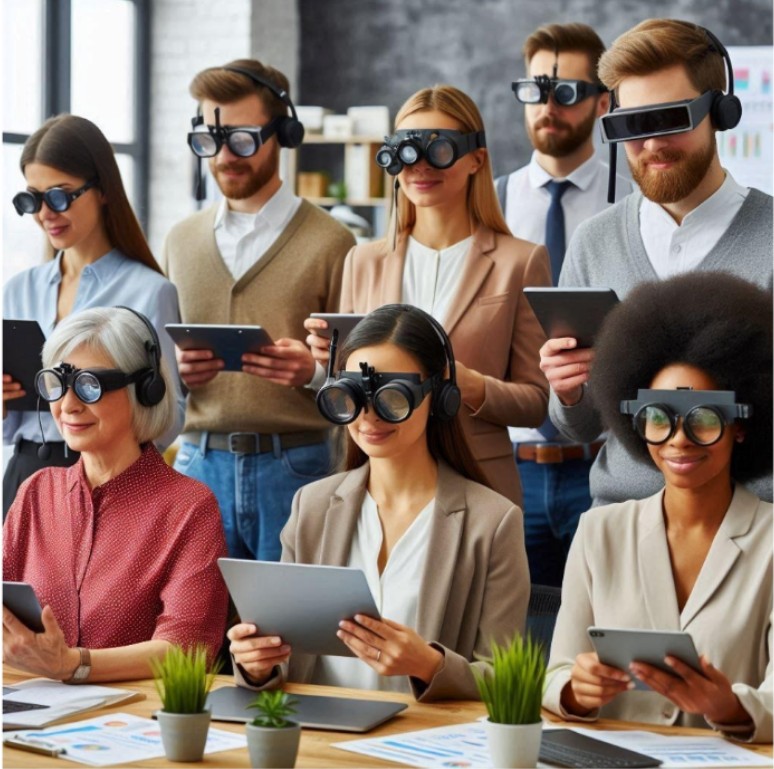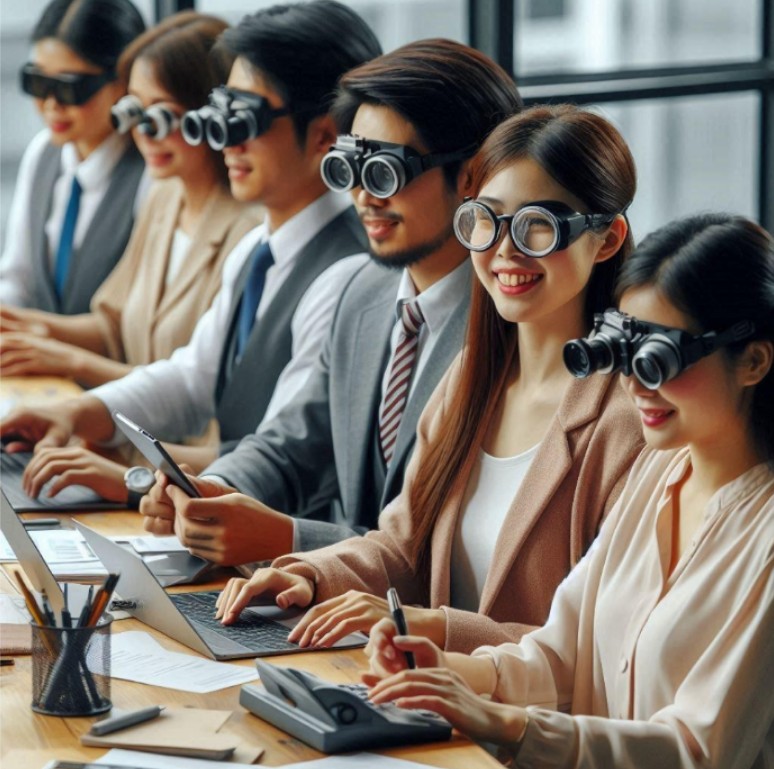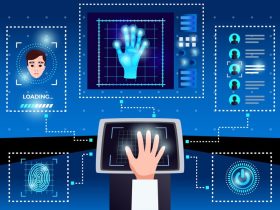The workplace is a dynamic environment that demands adaptability and inclusivity. For individuals with visual impairments, navigating professional challenges can be particularly demanding. However, the advent of assistive technology has revolutionized how people with visual disabilities interact with their surroundings and excel in their careers. This article delves into the world of assistive technology devices specifically designed for visual impairments, exploring their capabilities, benefits, and how they can empower individuals to thrive in the workplace.
Key Highlights
- Assistive technology empowers individuals with visual impairments to thrive in the workplace by providing essential tools for independence and productivity.
- A variety of assistive devices, including screen readers, magnifiers, and Braille displays, can be tailored to individual needs.
- Employers can foster an inclusive workplace by investing in assistive technology, providing training, and creating accessible work environments.

Image Credit Goes to florida Vision Technology
Understanding Visual Impairments and the Workplace
Visual impairments encompass a broad spectrum of conditions, ranging from mild low vision to complete blindness. These impairments can significantly impact an individual’s ability to perform tasks that rely heavily on sight, such as reading documents, using computers, and navigating physical spaces. The workplace, traditionally designed with visual cues in mind, can pose additional challenges for people with visual impairments.
To create an inclusive and accessible work environment, employers must recognize the potential of assistive technology devices for visual impairments. By investing in these specialized tools and providing appropriate training, organizations can unlock the full potential of employees with visual impairments. This investment not only fosters a culture of diversity and innovation but also enhances productivity and job satisfaction, demonstrating a commitment to inclusivity and equitable opportunity.
The Role of Assistive Technology
Assistive technology (AT) refers to any device, software, or equipment that helps individuals with disabilities perform tasks more independently. For people with visual impairments, AT can be a game-changer, providing essential support in various workplace settings. These devices can enhance communication, productivity, and overall job satisfaction.
Types of Assistive Technology Devices
A wide range of assistive technology devices is available to cater to the diverse needs of individuals with visual impairments. Let’s explore some of the most common categories:
Screen Readers
Screen readers are software applications that convert text on a computer screen into audible or tactile output. They enable users to access digital information by listening to the content or reading it through Braille displays. Popular screen readers include:
- JAWS (Job Access With Speech): A powerful and comprehensive screen reader offering advanced features.
- NVDA (NonVisual Desktop Access): A free and open-source screen reader compatible with various operating systems.
- VoiceOver (iOS): Built-in screen reader for Apple devices.
- TalkBack (Android): Built-in screen reader for Android devices.
Screen Magnifiers
Screen magnifiers enlarge the content on a computer screen, making it easier for individuals with low vision to read and see details. These devices can be hardware-based or software-based, offering adjustable magnification levels and contrast settings.
Optical Character Recognition (OCR) Software
OCR software converts printed text into digital format, which can then be read aloud by a screen reader or magnified on a computer screen. This technology is invaluable for accessing printed documents, books, and forms.
Closed-Circuit Television (CCTV)
CCTV systems are electronic magnifiers that capture images from a camera and display them on a large screen with adjustable magnification and contrast settings. These devices are particularly useful for reading printed materials, such as newspapers, letters, and menus.
Braille Displays
Braille displays are electronic devices that convert digital text into Braille output, allowing blind individuals to read and interact with computers and other electronic devices. They feature refreshable Braille cells that can be updated in real-time.
Speech Recognition Software
Speech recognition software enables users to control computers and create documents by speaking commands and dictation. This technology can be helpful for individuals with limited mobility or visual impairments.
Benefits of Assistive Technology in the Workplace
The integration of assistive technology in the workplace offers numerous advantages for both employees with visual impairments and employers:
- Increased independence: Visual Assist Devices empower individuals with visual impairments to perform tasks independently, boosting their confidence and self-esteem.
- Enhanced productivity: By providing the necessary tools, Visual assist devices help employees with visual impairments become more efficient and productive in their roles.
- Improved job satisfaction: When employees feel supported and equipped to succeed with the help of Visual Assist Devices, job satisfaction increases, leading to higher morale and retention rates.
- Accessibility: Visual Assist Devices promote a more inclusive and accessible workplace, ensuring equal opportunities for all employees.
- Compliance: Using Visual Assist Devices helps organizations comply with disability rights laws and regulations, demonstrating a commitment to equitable practices.
Integrating these specialized tools not only supports individual employees but also contributes to a more diverse and productive work environment.
Overcoming Challenges and Maximizing Benefits
While assistive technology has made significant strides, challenges still exist. Some individuals may require additional training or support to effectively use AT devices. Moreover, the cost of purchasing and maintaining assistive technology can be a barrier for some.
To overcome these challenges, employers can implement the following strategies:
- Provide comprehensive training: Offer training sessions on assistive technology to both employees with visual impairments and their colleagues.
- Create an accessible work environment: Ensure the physical workspace is free of obstacles and well-lit.
- Offer flexible work arrangements: Consider options like remote work or flexible hours to accommodate the needs of employees with visual impairments.
- Promote assistive technology awareness: Educate employees about the benefits of assistive technology and foster a supportive workplace culture.
- Explore funding options: Research available grants, subsidies, and tax incentives to assist with the cost of assistive technology.
Conclusion
Assistive technology has transformed the lives of countless individuals with visual impairments, including those in the workplace. By understanding the various types of AT devices and their benefits, employers can create inclusive environments that empower employees to reach their full potential. Investing in assistive technology is not only a moral obligation but also a strategic business decision that can lead to increased productivity, innovation, and employee satisfaction.









Leave a Reply